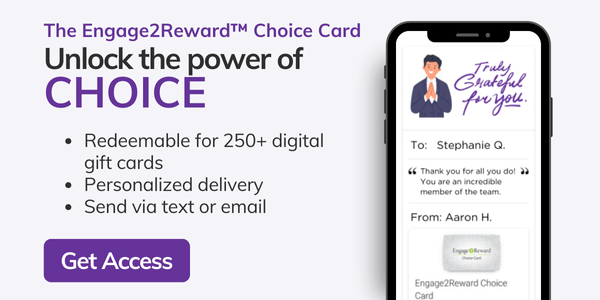2.8 million cases were recorded of nonfatal injuries and illnesses in United States in 2022, averaging about 10 days away from work per incident of injury or illness.
Because of this significant impact on productivity and continuity, safety has become a top priority at many companies. But getting employees engaged in safety programs and compliance is not always easy.
Having the right safety incentive plan in place can help to motivate employees to invest in the types of protocols, procedures, and precautions necessary to make for a safer work environment.
Creating Effective Safety Incentive Programs
Do:
- Put employee behavior front and center – Create incentives that are aligned with critical components of an employee’s day. This could be wearing safety goggles and hard hats whenever they are required, weekly safety meeting participation, and immediately reporting unsafe conditions. By focusing on procedures that are essential to employees’ job function, you create a compelling, employee-centric program.
- Involve employees in the process – Engage employees in reducing risk and making the workplace safer by involving them in the program design. Get employees invested in the program by having them submit ideas to make the office, job site, and even the parking lot safer.
- Make program goals SMART – Make sure your safety incentive goals are specific, measurable, achievable, realistic, and time-based. When behaviors and goals fall within this SMART goal model, they can be measured, tracked, and clearly explained. This means employees are more likely to participate and contribute to successful outcomes.
- Make incentives personal – Having incentives linked to an individual employee’s behavior makes them more personal and motivating. Instead of providing all qualified program participants with the same gift, individual incentives allow each participant to choose the incentive that holds the most value for their circumstances.
Don't:
- Rely on outcome-based criteria – When you reward someone for an outcome (i.e., a certain number of days without an accident) you create a circumstance where employees could be more likely to cover up an incident to “keep a streak alive.” Instead, reward behavior-based activities focused on compliance. This keeps the program emphasis on what employees can do, versus what they want to avoid.
- Be too broad – Incentives should be linked to specific behaviors that are clearly defined. Be cautious not to build safety incentive plan criteria that are too abstract or aggregate data across too many teams. Making incentive criteria specific is key to driving safe behavior.
- Make new reward criteria (feel) unattainable – When old safety incentive criteria are replaced, make the new incentives criteria the same or even easier to obtain. Make sure to notify all employees of the changes and the new plan criteria to motivate employees to the common goal of a safe workplace.
As you implement any safety incentive program, keeping behavior criteria and program tone positive will go a long way in motivating and engaging employees with the program.
Ready to learn more? Read our blog on creating successful safety incentive programs

Next, the Safety Incentives
It is not enough to simply announce that you will be offering incentives for safe behavior. Incentives must hold value for participants. Getting in tune with your employees can make deciding on incentive choices easier. Here are some incentive ideas that typically work well for employees:
- Gift cards – Gift cards are one of the most popular reward and incentive choices in any industry. Gift cards are highly customizable and can be tailored to your employees. Program administrators can explore a wide variety of brand options or a smaller catalogue of universally valuable brands like Dick’s Sporting Goods, Target, DoorDash, or Home Depot® and allow program participants to select the brand that works best for them. Incorporating features like digital or physical card delivery can also enhance the incentive reward experience.
- With over 250 digital gift card brands to choose from, the Engage2Reward™ Choice Card offers unparalleled flexibility for the recipient. Customize the Engage2Reward Choice Card with a message, animated greeting card, and recipient-specific photo, creating a personalized experience.
- Personal recognition – Often employees just want to be recognized for their hard work and adherence to safety programs. Adding safety program elements to your regular team or company meetings can boost morale. This is a great way to acknowledge employees who are following or leading the program and also helps give recognition to their efforts.
- Special office perks – Grant an extra hour or two off for your employee or allow them to work a day from home. Provide a catered lunch at the office or dinner out with coworkers. These are just a few safety incentive ideas that are low budget, tie directly back to safe behaviors, and provide memorable experiences to employees.
Ready to dig deeper into safety incentive programs?
Download Creating a Successful Safety Incentive Program to learn more about increasing employee engagement with effective safety rewards plans. In this guide you'll learn:
- The importance of identifying your audience
- How to select the most effective rewards
- The ROI of safety incentive programs
- ... and more










